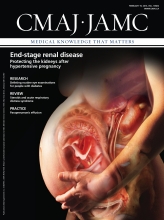My son Isaac and I were standing at the threshold to his bedroom. We had just installed a chin-up bar so he (okay, we) could improve our upper body strength. As we gazed at the source of our future biceps, I was reminded of a doorway from not so long ago. Isaac would spend hours as a baby bouncing under a door jam in his Jolly Jumper. This memory brought a smile to my face — how things had changed.
I went downstairs to have a latté and looked at the paper. There was a story about yet another suicide of a gay teen. This news felt the way it feels when you get punched on top of a bruise. You’ve forgotten that you’re hurt until someone cruelly reminds you. When you come out as gay, you try to make peace with yourself and your choices, and eventually you cross a threshold. This crossing over represents the starting point for accepting the differences that are causing you moral conflict. On the other side of that threshold, the pain and angst of growing up gay gradually fades, but it never completely disappears.
I hid my homosexuality when I was in medical school from 1986 to 1990. Perhaps I wasn’t ready to come out, but the medical school environment certainly didn’t pull me out. Gay jokes and comments were (and to a lesser extent, still are) commonplace. The risk of coming out seemed too high both in terms of social comfort and career prospects. I simply wasn’t confident as a potential recruit that the people doing the hiring would look favourably upon a gay department member.
When I was a resident in the early 1990s, a friend informed me of a secret society of gay doctors that I could join. The name was nowhere in print, only in whispers. Today there are more transparent resources to support gay and lesbian medical students and physicians such as GLBT Meds Canada1 and the Gay and Lesbian Medical Association.2

Image courtesy of © 2013 Thinkstock
I was living with my partner Sean during my residency. He recently reminded me that I was afraid to put him on my benefits plan back then, even though I was entitled. That was nineteen years ago. Now we are effectively married, have adopted two children together and are among the least controversial families at our kids’ school. Okay, we’ve become a bit boring, which underscores the ease with which complacency can creep in as our post-threshold lives unfold. But some don’t make it.
Over a period of several years during medical school, we had several talented and beloved students commit suicide. I have always wondered whether agony relating to sexual identity was involved in some. At the time, it took a person with strong convictions, and the character to support them, to be openly gay while in university. Secrecy was the key for the rest of us.
Suicide is all too common among gay and lesbian youth. High school students who identify as homosexual or bisexual are four times more likely to attempt suicide.3 The “It Gets Better Project” was launched by Dan Savage and Terry Miller to give hope to gay teens. Tens of thousands of people have submitted video testimonials about how great life can be for gay men and women after finishing high school.4 Sean and I submitted one. We feel extremely lucky to be living the life we have and wanted to let young people know that there are others out there who went through some of the struggles that they face, and that it can turn out great! Many of these stories were transcribed and published in book form.5 We don’t know if online support will prevent suicides in teens. Hopefully hearing success stories from established gay and lesbian adults will provide youth with inspiration and hope.
Each of us comes out as a result of unique internal and external stimuli. What is not unique is the turmoil and psychological crisis that accompanies the process. For some, this period is short-lived. For others, the stress relating to coming out can be complicated and protracted.
We should remember that for our medical trainees, health care can be a difficult environment in which to come out. Many medical students effectively compartmentalize their personal lives, using the excuse that their studies are paramount. Eventually the time arrives for them to open up to themselves and others. These young men and women benefit from the guidance of role models who are willing to share their own stories. They need a supportive environment that encourages authenticity and openness. We ought to try to understand (and for some of us, remember) what it feels like to live on the other side of the threshold, and be prepared to help.
Do you have an opinion about this article? Post your views at www.cmaj.ca. Potential Salon contributors are welcome to send a query to salon{at}cmaj.ca.
Footnotes
-
For references, see Appendix 1, available at www.cmaj.ca/lookup/suppl/doi:10.1503/cmaj.121197/-/DC1











